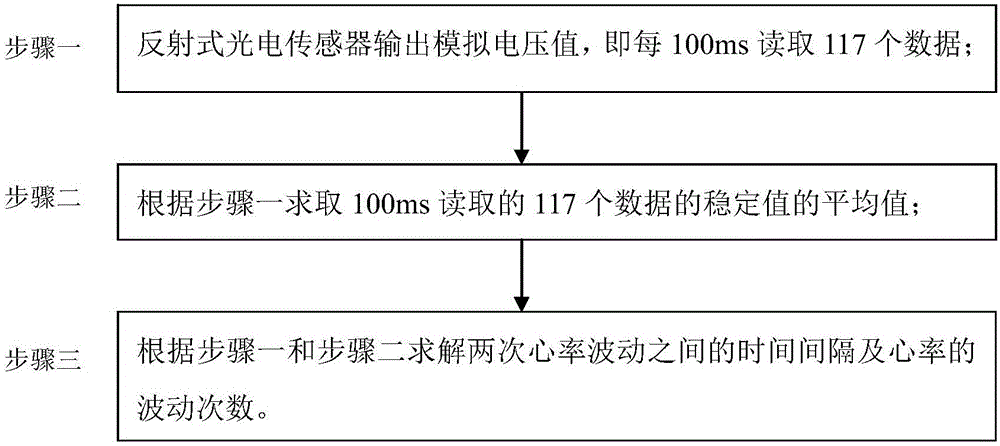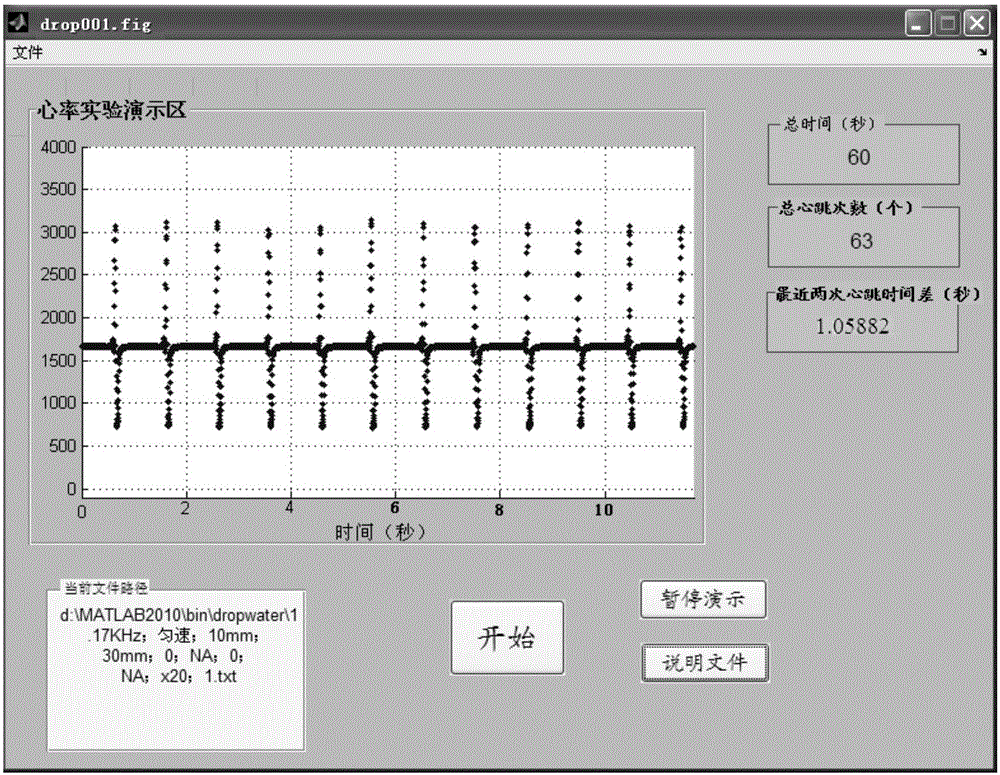Reflection-type heart rate monitoring method based on moving window integration
A moving window and reflective technology, which is applied in medical science, sensors, diagnostic recording/measurement, etc., can solve the problems of low accuracy, high energy consumption, and inability to display electrocardiograms, etc., to improve accuracy, ensure real-time performance and accuracy sexual effect
- Summary
- Abstract
- Description
- Claims
- Application Information
AI Technical Summary
Problems solved by technology
Method used
Image
Examples
specific Embodiment approach 1
[0023] Specific implementation mode one: combine figure 1 To illustrate this embodiment, a reflective heart rate monitoring method based on moving window integration is specifically carried out according to the following steps:
[0024] Step 1. The reflective photoelectric sensor outputs the analog voltage value, that is, reads 117 data every 100ms, so as to ensure the real-time and accuracy of the data;
[0025] Step 2. Calculate the average value of the stable values of the 117 data read in 100ms according to step 1;
[0026] Step 3: Calculate the time interval between two heart rate fluctuations and the number of heart rate fluctuations according to steps 1 and 2.
specific Embodiment approach 2
[0027] Specific embodiment two: the difference between this embodiment and specific embodiment one is: in said step two, according to step one, the average value of the window stability value within 100 ms is obtained; the specific process is:
[0028] Take the average value S of the 117 data read in the first 100ms 0 , namely S 0 =(A 1 +A 2 +A 3 +......+A 117 ) / 117, A 1 The first data among the 117 data read in the first 100ms, A 2 The second data among the 117 data read in the first 100ms, A 3 The third data among the 117 data read in the first 100ms, A 117 It is the 117th data among the 117 data read in the first 100ms, 1≤k≤n, k=1, 2....117, n is the read data, and the value range of n is: n=1 , 2....117;
[0029] with S 0 Perform moving window integration for the window reference value and the 117 data read this time, and obtain the stable value S of the 117 data read in the first 100ms 1 , the S 1 As a reference value for moving window integration, do moving w...
specific Embodiment approach 3
[0035] Specific embodiment three: the difference between this embodiment and specific embodiment one or two is that in the step three, the time interval between two heart rate fluctuations and the number of heart rate fluctuations are solved according to step one and step two; the specific process is:
[0036] Assuming that the time of the mth data is m / 1170 seconds, how many data are detected between the two heart rate fluctuations, and multiplied by m / 1170 is the time interval between the two heart rate fluctuations;
[0037] The process of determining the number of heart rate fluctuations is as follows:
[0038] When the value of the heart rate signal drops and continues to rise beyond the reference value of the moving window integral of 100ms, it is judged as a heartbeat, flag is a count array, when the value of the heart rate signal drops beyond the reference value of the moving window integral, the first The two bits change from 0 to 1. When the value of the heart rate s...
PUM
 Login to View More
Login to View More Abstract
Description
Claims
Application Information
 Login to View More
Login to View More - R&D
- Intellectual Property
- Life Sciences
- Materials
- Tech Scout
- Unparalleled Data Quality
- Higher Quality Content
- 60% Fewer Hallucinations
Browse by: Latest US Patents, China's latest patents, Technical Efficacy Thesaurus, Application Domain, Technology Topic, Popular Technical Reports.
© 2025 PatSnap. All rights reserved.Legal|Privacy policy|Modern Slavery Act Transparency Statement|Sitemap|About US| Contact US: help@patsnap.com



